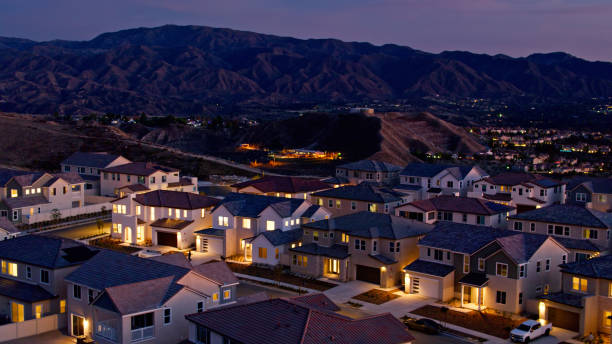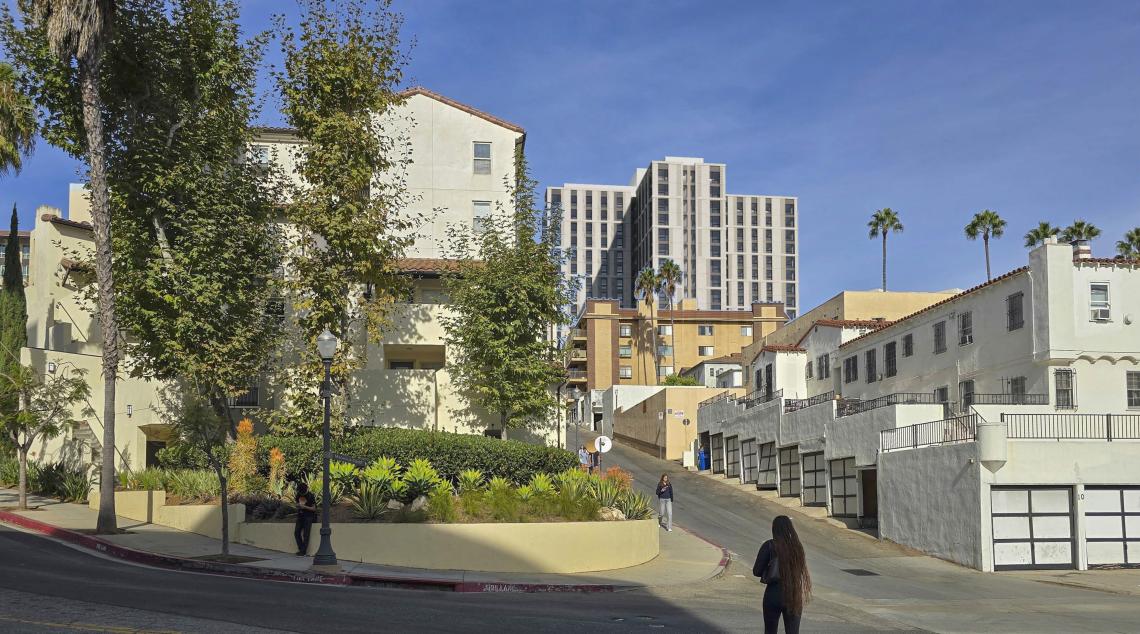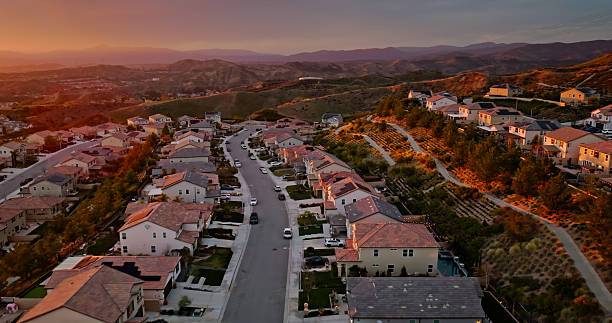Southern California has always been a place where the housing market sets the mood of the people. When prices soar, homeowners feel invincible. When prices drop, everyone suddenly turns into an economist. But today, the market feels… numb. Not crashing. Not booming. Just stuck somewhere in the middle — and that might be the strangest part.
After a five-month slide, home prices in October ticked up by a microscopic 0.01%. Enough to stop the bleeding. Not enough to declare a comeback. And that’s the energy of the entire region right now: a market trying to decide what it wants to be.
Let’s break it all down.
A Tiny Price Increase That Says a Lot
On paper, the number looks almost meaningless. A 0.01% rise in home values? You could lose more than that in change between your couch cushions.
But context matters.
Since April, average home values were sliding downward. Not dramatically, but steadily — about $14,000 on average. That kind of slow erosion usually hints at buyers stepping back, uncertainty rising, and sellers starting to sweat.
So when prices stop falling, even by a hair, it tells us something important:
-
Sellers have pumped the brakes.
-
Buyers are still picky, but not disappearing.
-
The tug-of-war between inventory and demand is shifting again.
Southern California’s average home price now sits at $860,773. Still high enough to make a first-time buyer choke on their iced coffee. But lower than last year — 1.4% down compared to October 2024.
This is what a confused market looks like. Not depressed. Not inflated. Just… wobbling.

Why the Housing Market Slowed Down
Economists like to list the usual suspects, and honestly, they’re not wrong. Here are the big three:
1. Mortgage Rates
High — painfully high.
The kind of high that makes people with 3% mortgage rates cling to their homes like family heirlooms.
2. Rising Inventory
More homes on the market means less pressure on buyers. But not in the usual “good news” way. It’s the kind of inventory that comes from uncertainty, not opportunity.
3. Tariff-Driven Economic Anxiety
When tariffs shake the economy, people hesitate. And real estate hates hesitation more than anything.
Put these together, and you get a sluggish, sensitive market.
Inventory: The Quiet Puppet Master Behind the Scenes
The most interesting trend of the moment isn’t prices — it’s listings.
In October:
-
L.A. County listings dropped 2%.
-
Price cuts dipped slightly.
-
BUT inventory is still 19% higher than last year.
This is a huge deal.
Inventory is the heartbeat of the housing market. Too little, and prices explode. Too much, and prices sink.
Last year, homes were disappearing. Sellers refused to give up their pandemic-era mortgage rates. That created scarcity. Scarcity drove prices back up.
Now, we’re seeing the opposite energy forming — but not fully committing.
Why sellers are trickling back in
Life goes on, even when mortgage rates don’t cooperate.
People get new jobs. Families expand. Parents downsize. And eventually, that ultra-low interest rate isn’t enough to keep them locked in place.
We’re watching that shift in real time.
But not fast enough to push prices down again. And not slowly enough to drive them back up. It’s a strange middle zone — the kind that rarely lasts long.
The Buyers: Still Hopeful, Still Stuck
If you’re a first-time buyer in Southern California, your life probably feels like a paradox.
You know prices dipped. You know more inventory is available.
But you still can’t buy anything because:
-
You don’t have existing equity.
-
Rates are too high.
-
Down payments feel impossible.
-
Competition is calmer, but not gone.
It’s like watching a sale at a luxury store.
Yes, the price tag dropped.
No, it still doesn’t matter.
This is the side effect of a market correction that never fully corrected.
Is a Recession Coming for the Market? It Depends Who You Ask
There’s always someone predicting doom. And to be fair, uncertain economic policy can tip the scales quickly.
Some economists warn that certain federal policies could push the country into a recession — and if that happens, housing will feel it first. Recessions always start by shaking confidence, and confidence is the currency the housing market relies on.
But others, including Zillow’s latest forecast, believe the economy will avoid a recession and prices will rise modestly over the next year.
Southern California’s projected increase: 1.4%
Nationwide projection: 1.9%
These aren’t boom numbers. They’re “we’re trying our best” numbers. The kind you put on a group project when you’re hoping no one asks too many questions.

Rental Prices: A Completely Different Story
While home prices are struggling to find direction, the rental market is going through its own identity crisis.
In Los Angeles, median rent fell to $2,206 in October. The second month in a row that rents dipped.
But here’s the twist:
The January fires changed everything.
Thousands of homes were destroyed. Most were single-family homes. And suddenly, countless families were pushed into the rental market.
What happens when disaster meets a soft market?
You get pressure — but only in pockets.
-
Larger units near burn areas? Prices are creeping up.
-
Smaller units farther away? Still dropping.
-
Cities bordering fire zones? Seeing mixed effects.
Santa Monica (next to Pacific Palisades) saw rents rise 2% compared to last year.
Pasadena (near Altadena) saw a 1.2% bump.
These are small numbers, but meaningful ones. They show how fragile the rental market is and how quickly local events can reshape it.
Southern California’s Housing Market Is Emotionally Exhausted
That might sound dramatic, but it’s true. Everyone feels the fatigue:
Buyers
Tired of waiting.
Tired of watching the dream float further away.
Sellers
Torn between financial logic and real-life needs.
Tired of timing decisions they can’t control.
Renters
Trapped between high costs and low options.
Wondering if they’ll ever get ahead.
Economists
Staring at mixed data and trying not to guess wrong.
We’re all waiting for clarity. And Southern California is famous for its sunshine — just not in the real estate market right now.
What’s Really Going On: A Market Searching for Its Identity
Every market goes through phases. But this one feels different because the signals don’t match.
Prices should be dropping more.
They aren’t.
Buyers should be flooding back in with more inventory.
They aren’t.
Sellers should be holding off with high interest rates.
They aren’t.
It’s a contradiction soup. And contradictory markets usually mean one thing:
We’re approaching a turning point.
And that turning point could go either direction.
The Big Questions for 2026
Here’s what everyone is secretly asking — even if they pretend not to:
Will prices rise again?
Possibly. But slowly.
Will rates drop?
Eventually. But “eventually” doesn’t help today’s buyers.
Will more sellers enter the market?
Yes — life events force decisions.
Will rents stabilize?
Probably. The fires created temporary distortions.
Will the market crash?
Unlikely. There’s too much built-in demand and too little new construction.
Will things ever feel normal?
Yes — but not yet.
My Take: Stability Isn’t Coming Soon, But Opportunity Is
This is not a stable market.
But that doesn’t mean it’s a bad one.
In fact, markets like this create rare windows of opportunity:
For buyers
Sellers are more flexible.
Price cuts are back.
Homes sit longer.
And competition is calmer.
For sellers
Inventory is up, but not overwhelming.
There’s still strong demand for the right home in the right location.
And buyers are hungry for properties that don’t need major renovations.
For renters
Softening rents offer breathing room.
Especially in smaller units outside high-demand neighborhoods.
Opportunity exists right now — but only for people who move strategically, not emotionally.
Final Thoughts: The Market Isn’t Broken. It’s Resetting.
Housing markets don’t like uncertainty, and Southern California has plenty of it right now. Tariffs, rates, fires, the broader economy — everything is tangled together.
But underneath all that noise, the fundamentals remain the same:
-
People still want to live here.
-
Housing is still limited.
-
Demand still outpaces supply.
-
And long-term value remains strong.
This is not a crash; not a boom. This is a reset.
And resets are uncomfortable, messy, and confusing — but also full of possibilities.
If you know where to look.
Check out more insightful real estate stories here: https://jdj-consulting.com/blogs/






